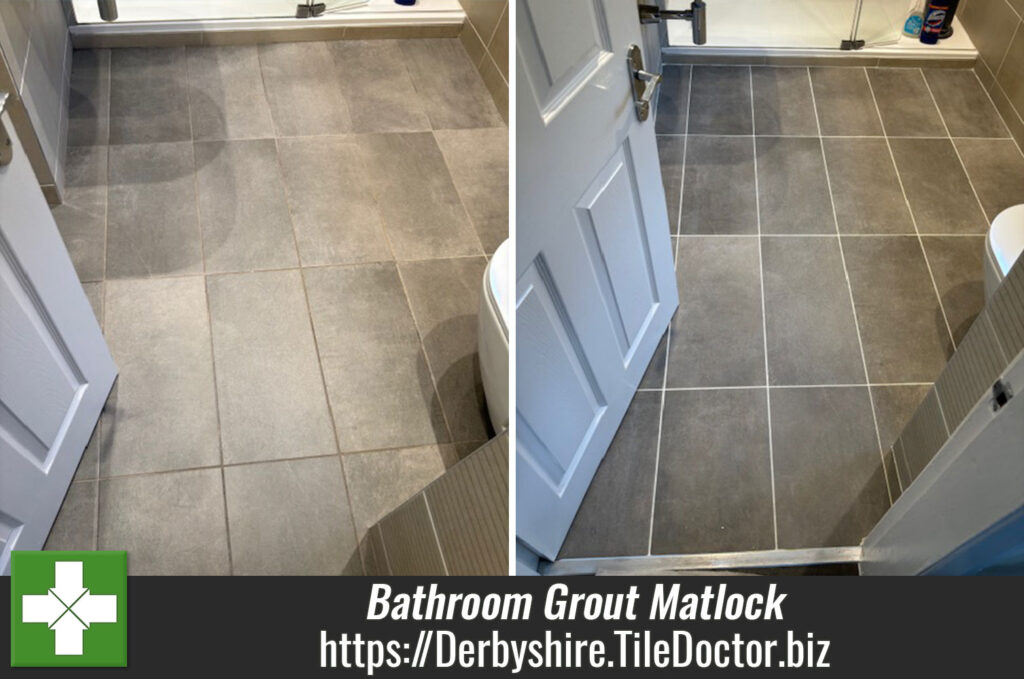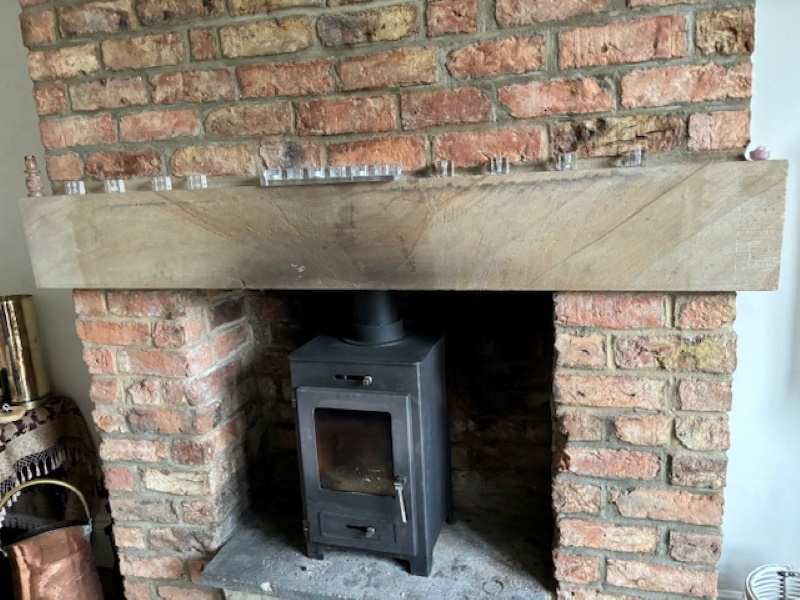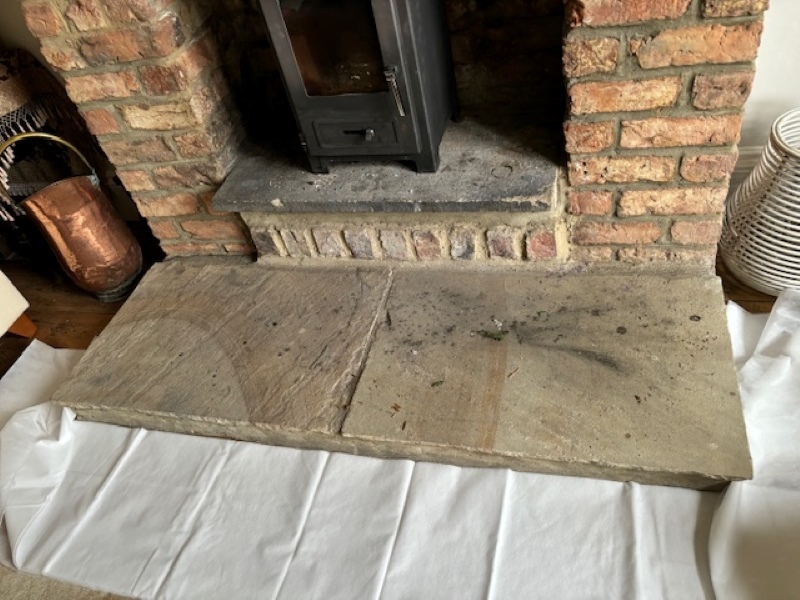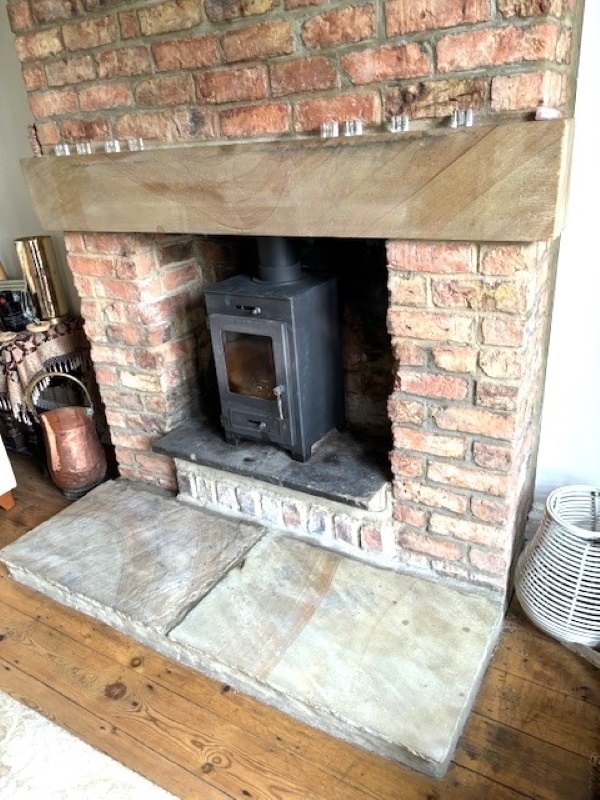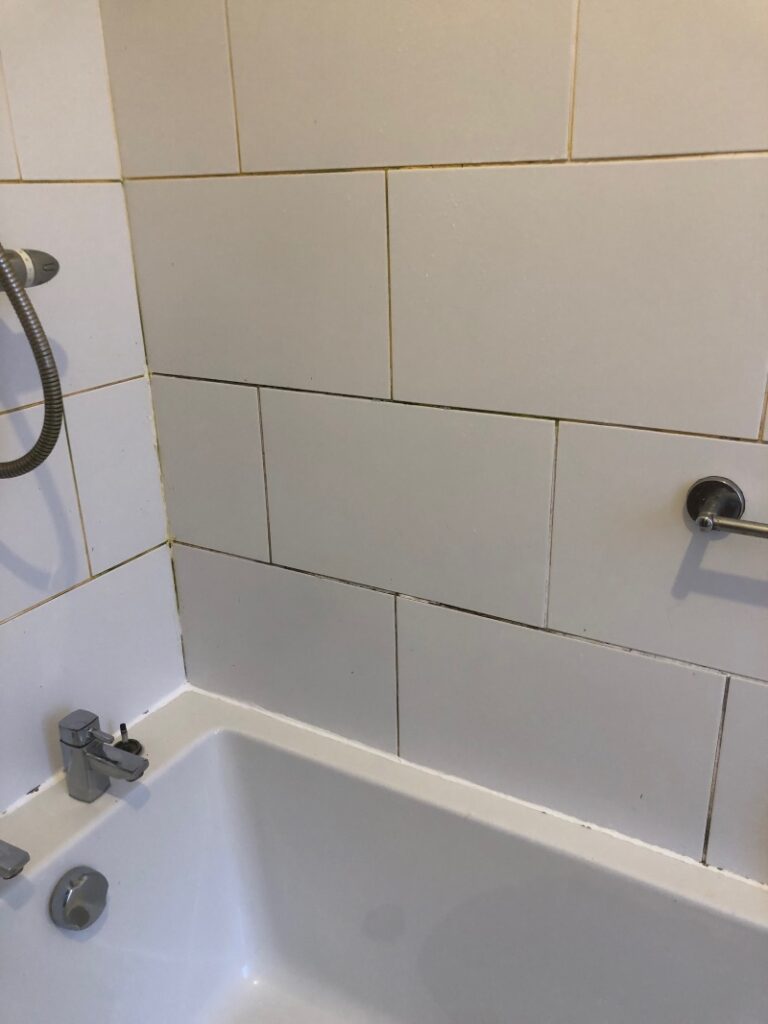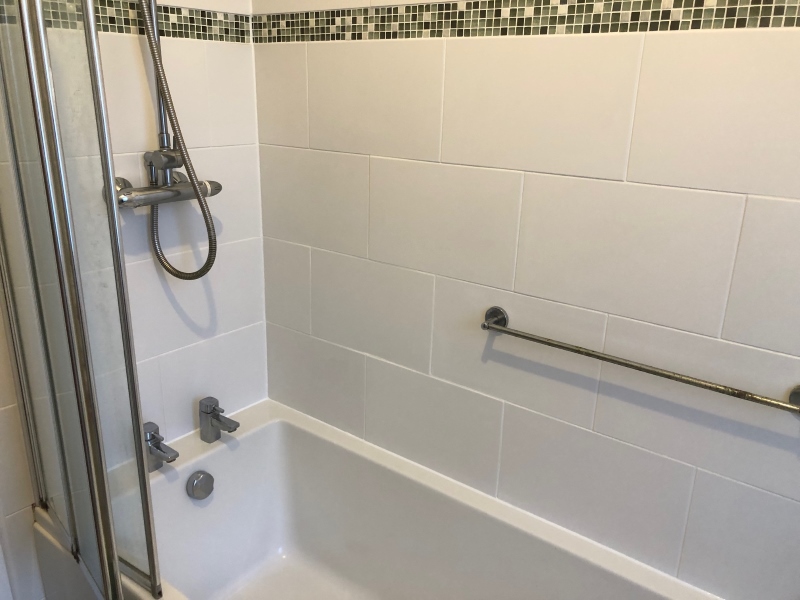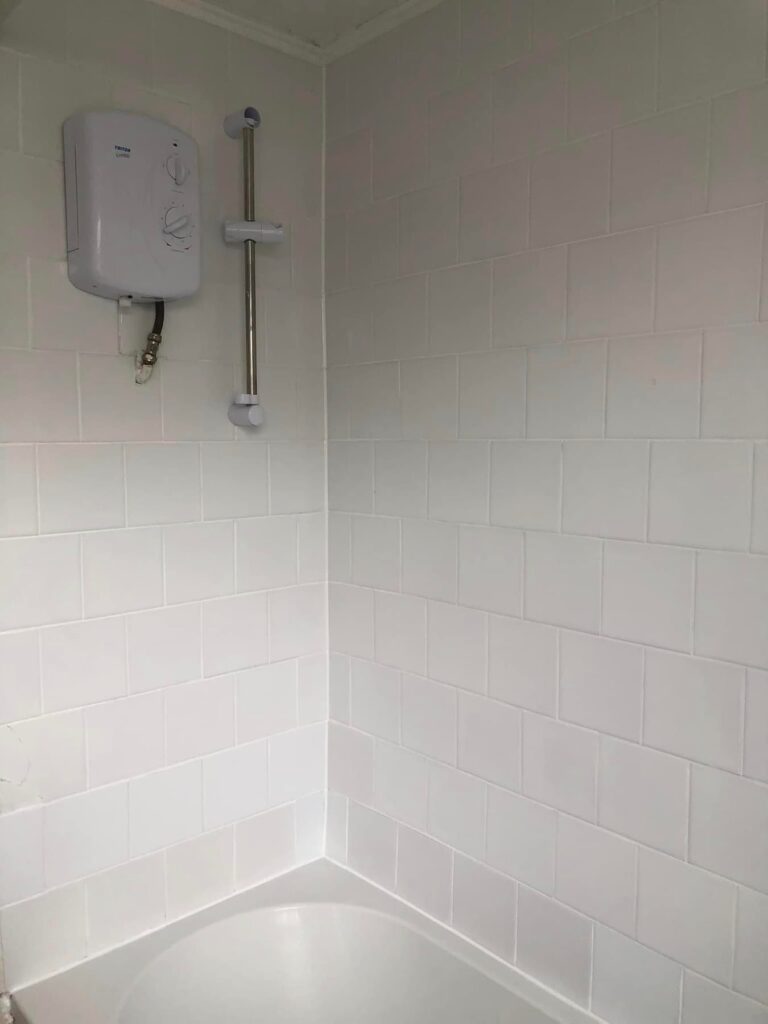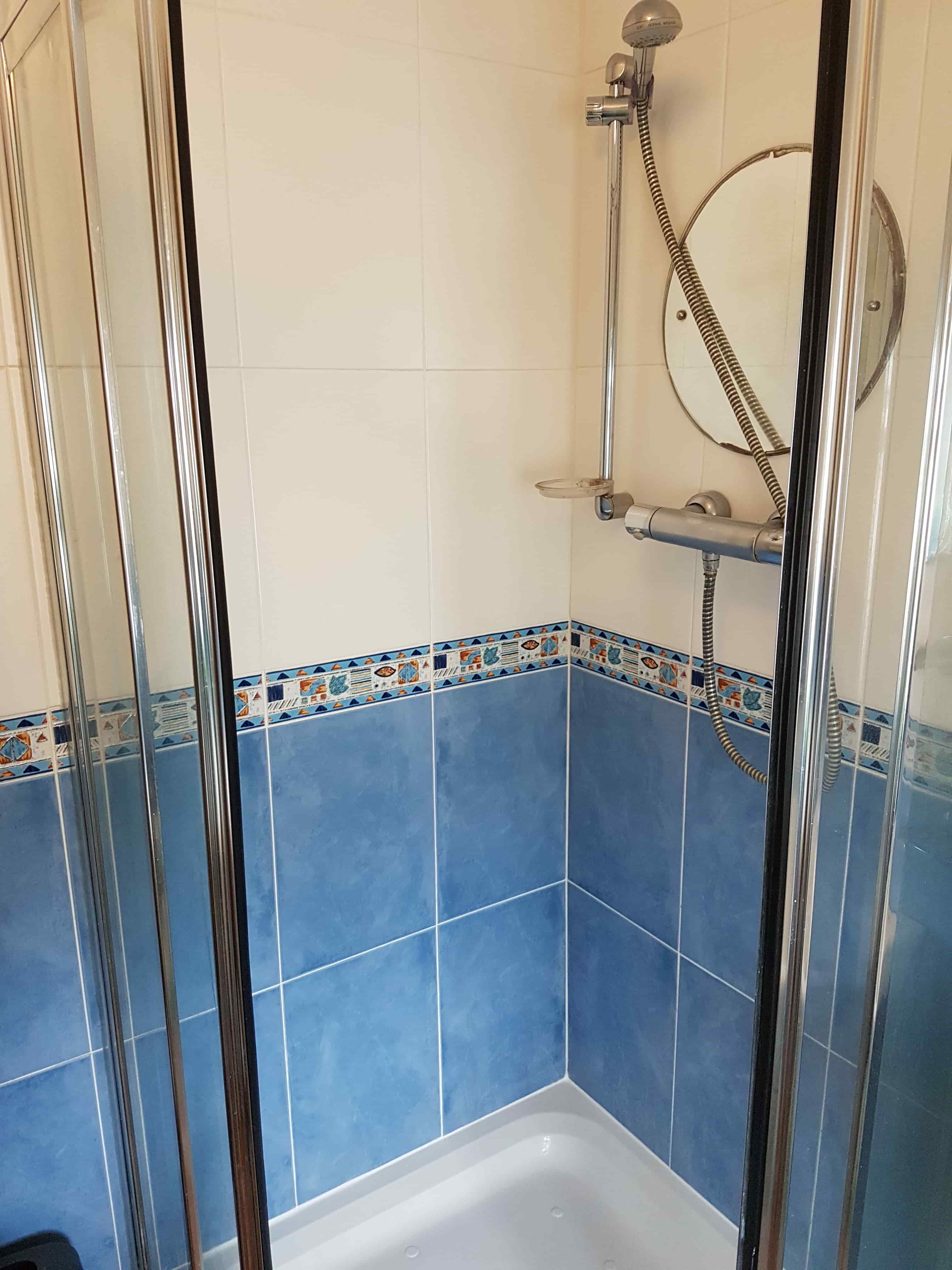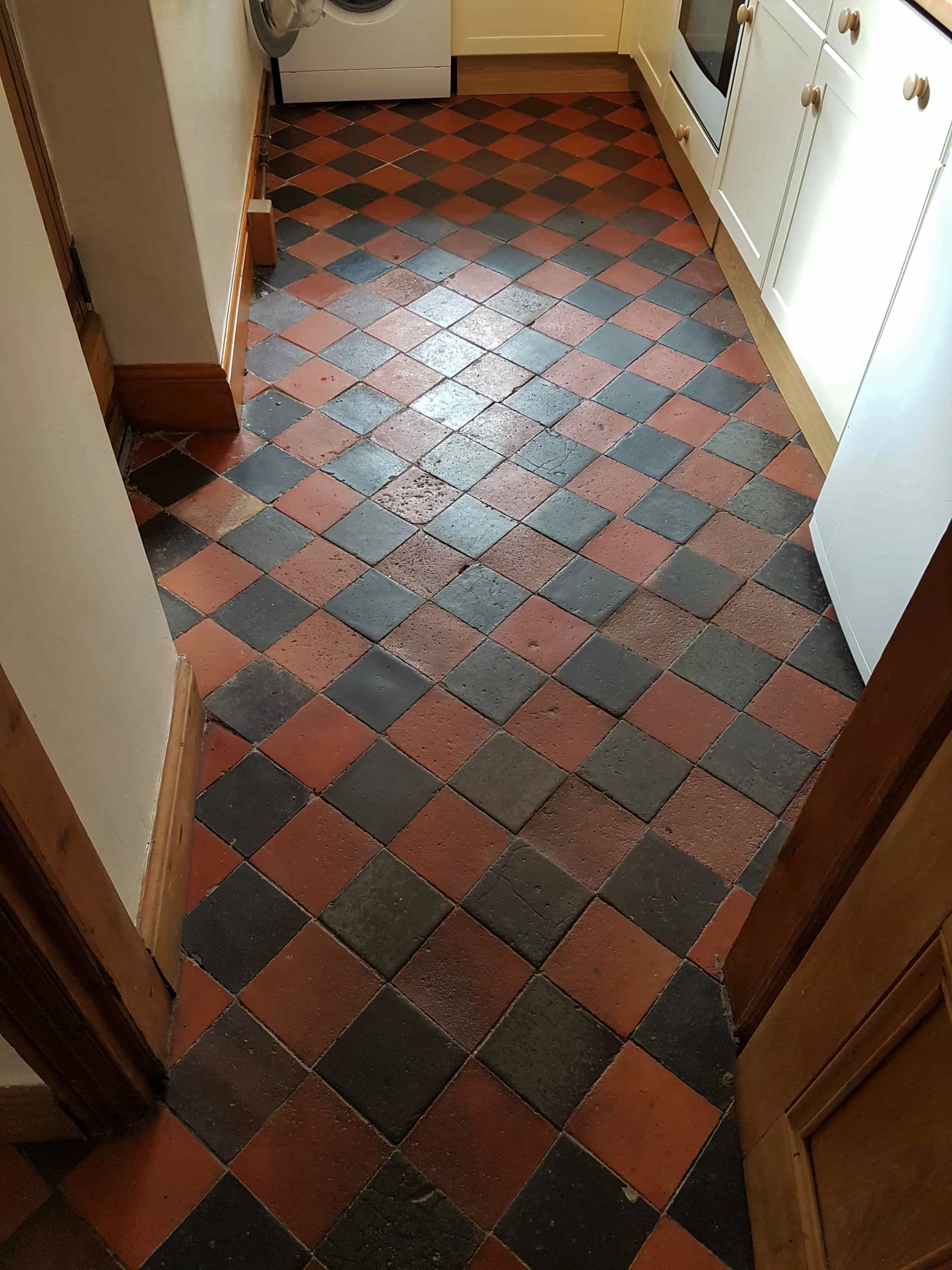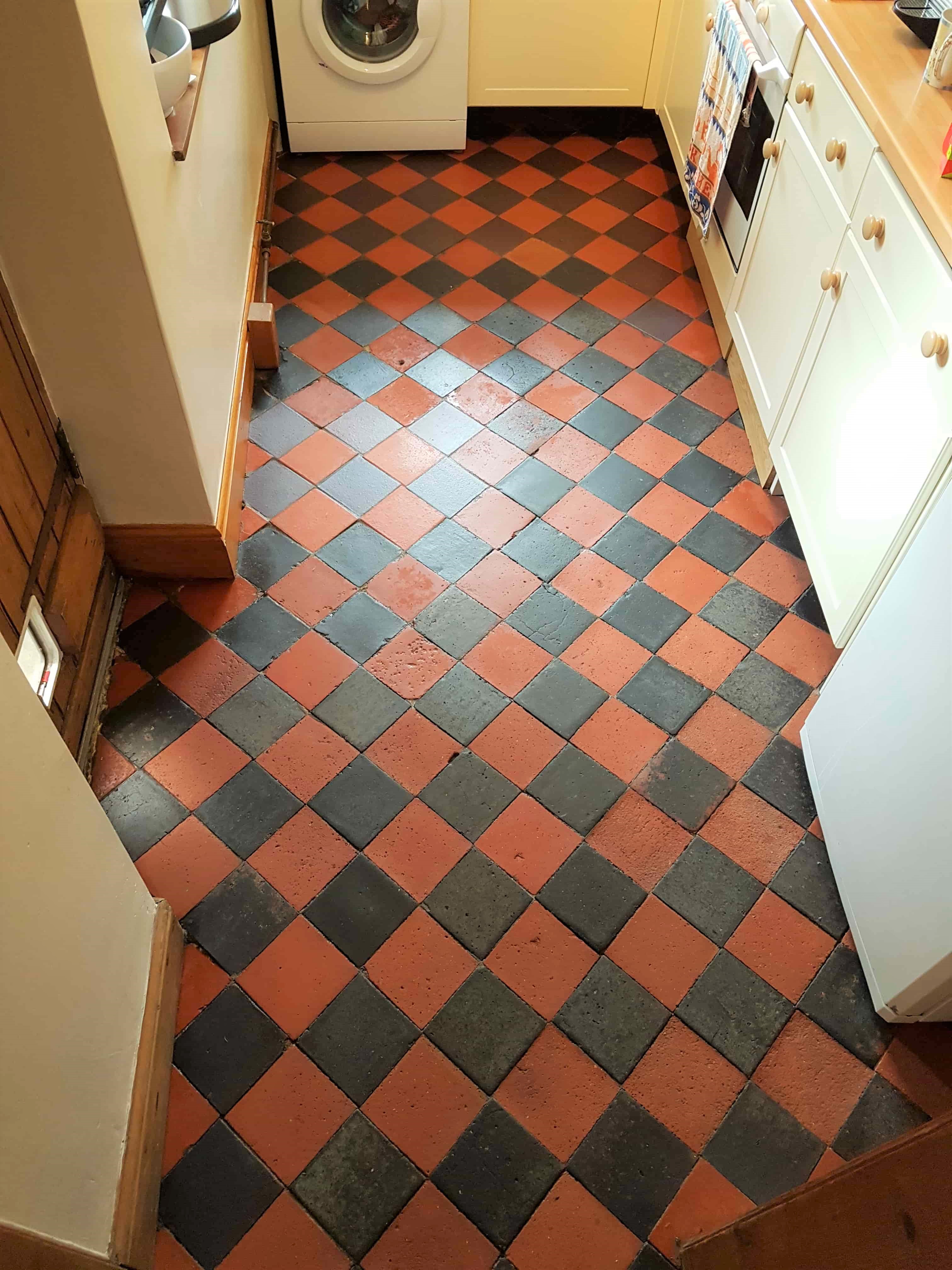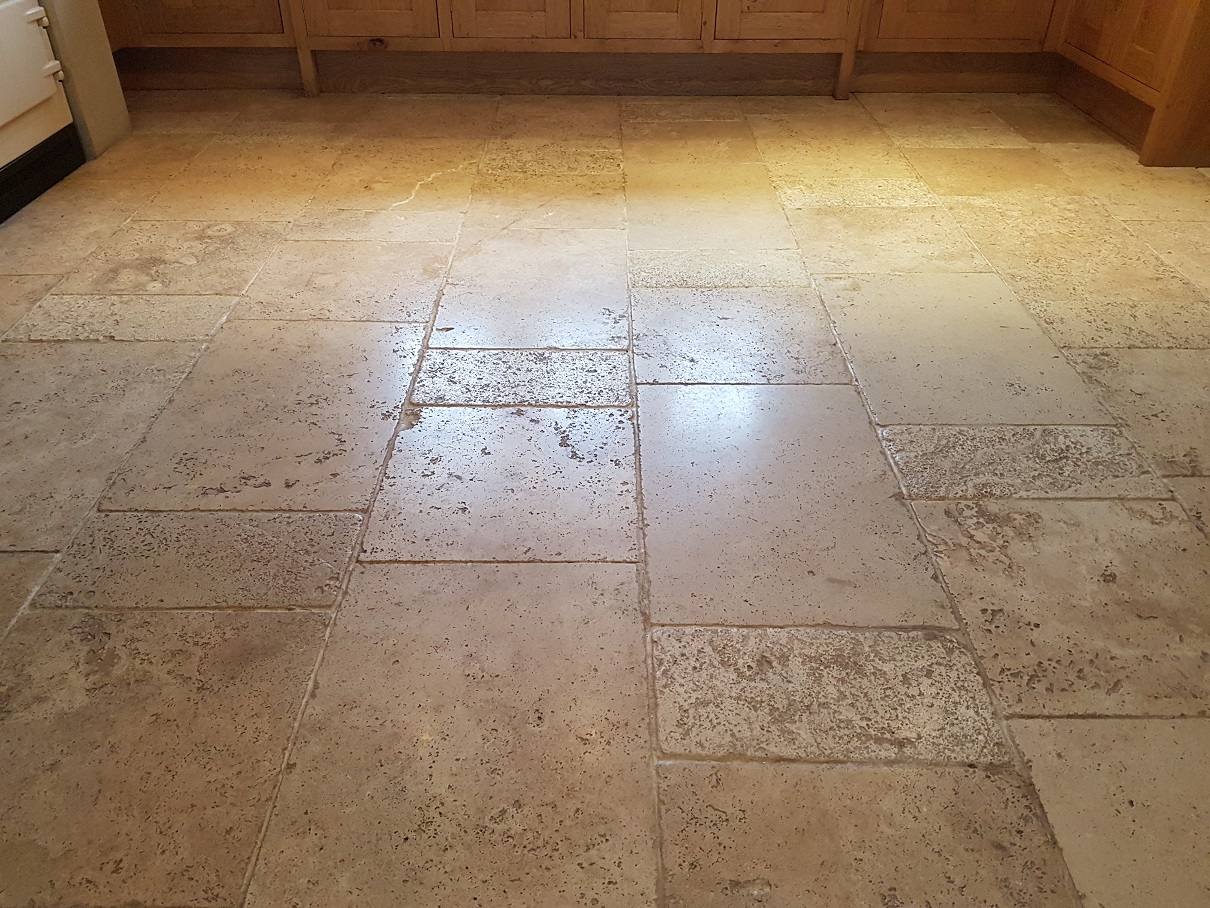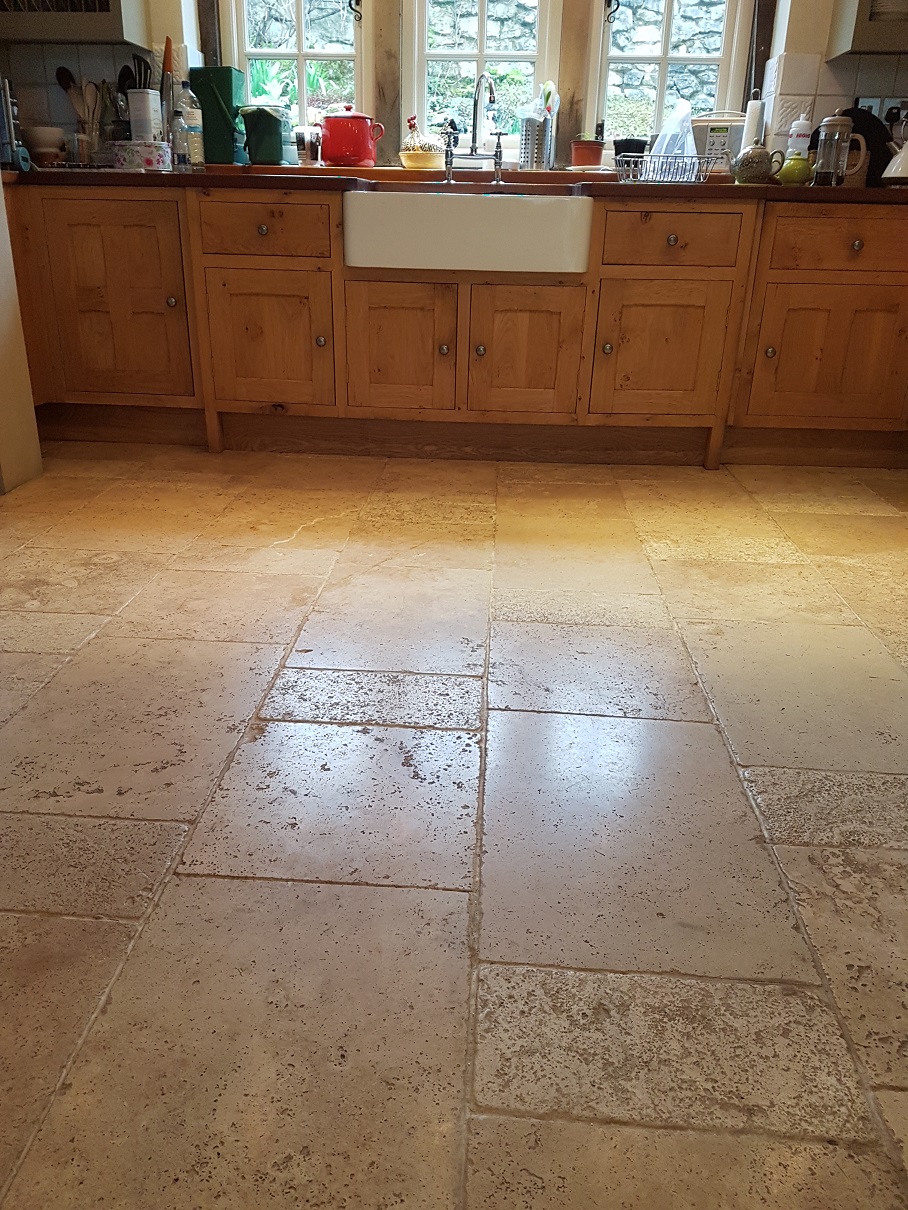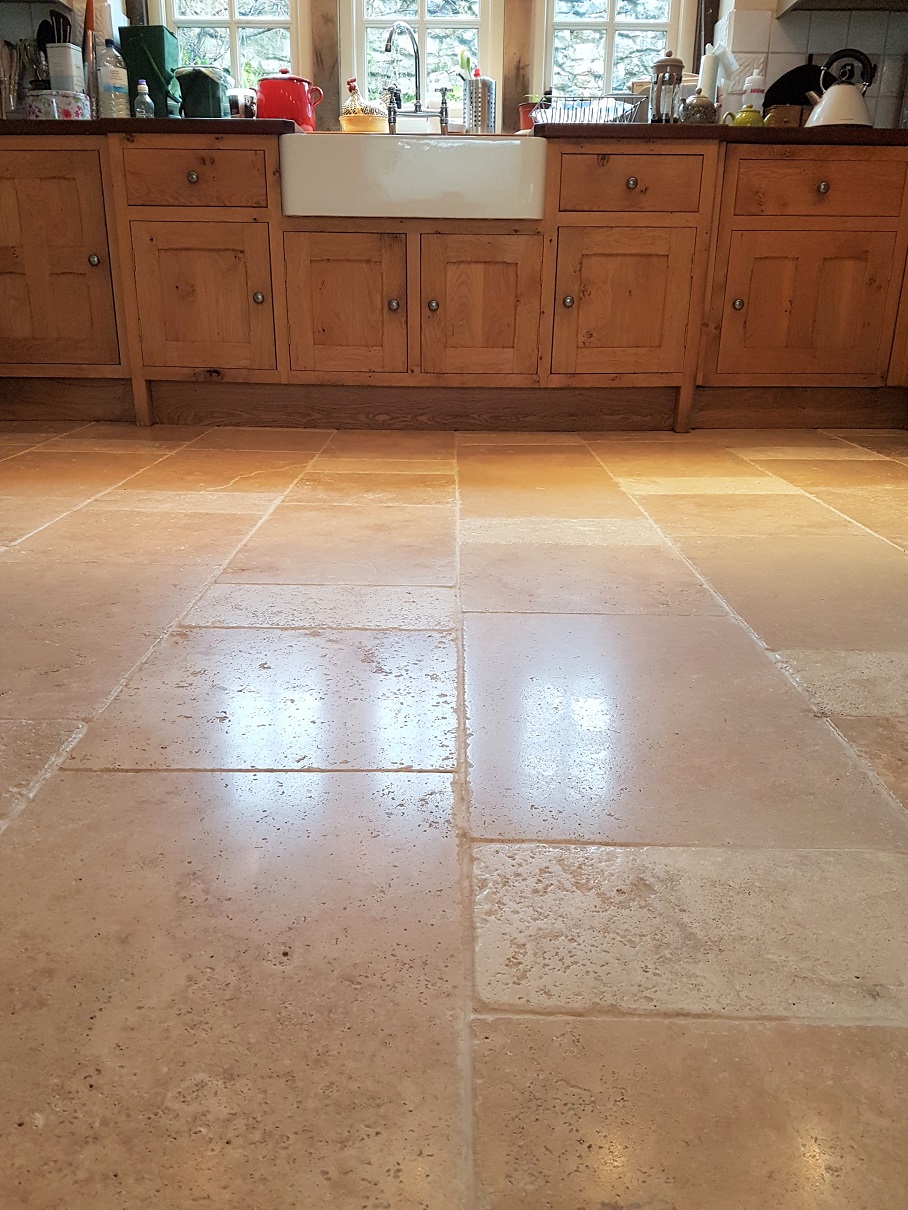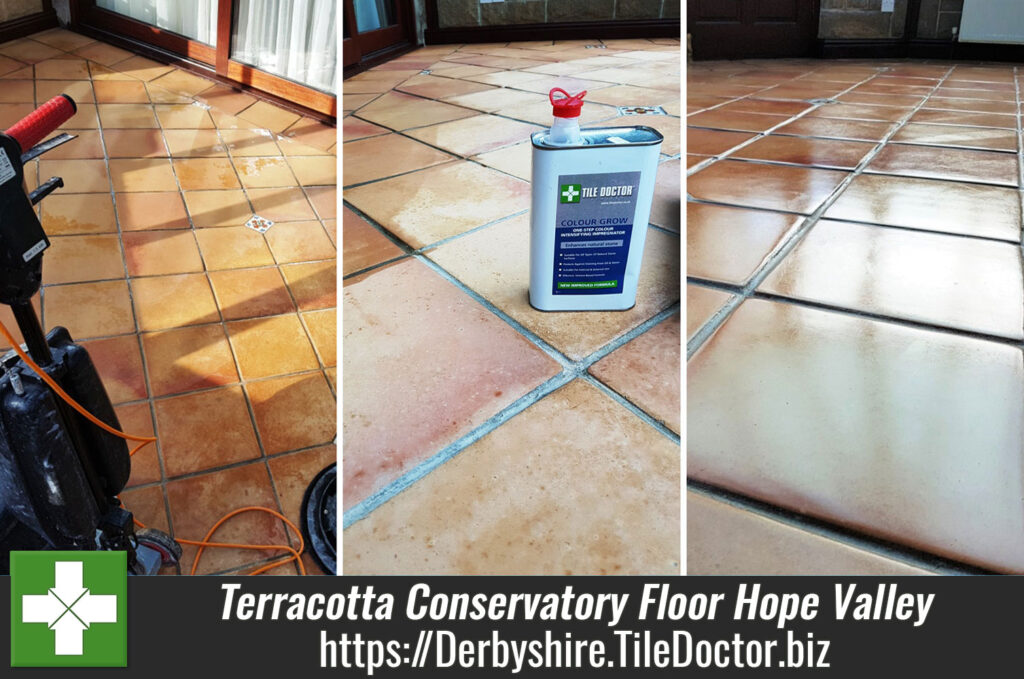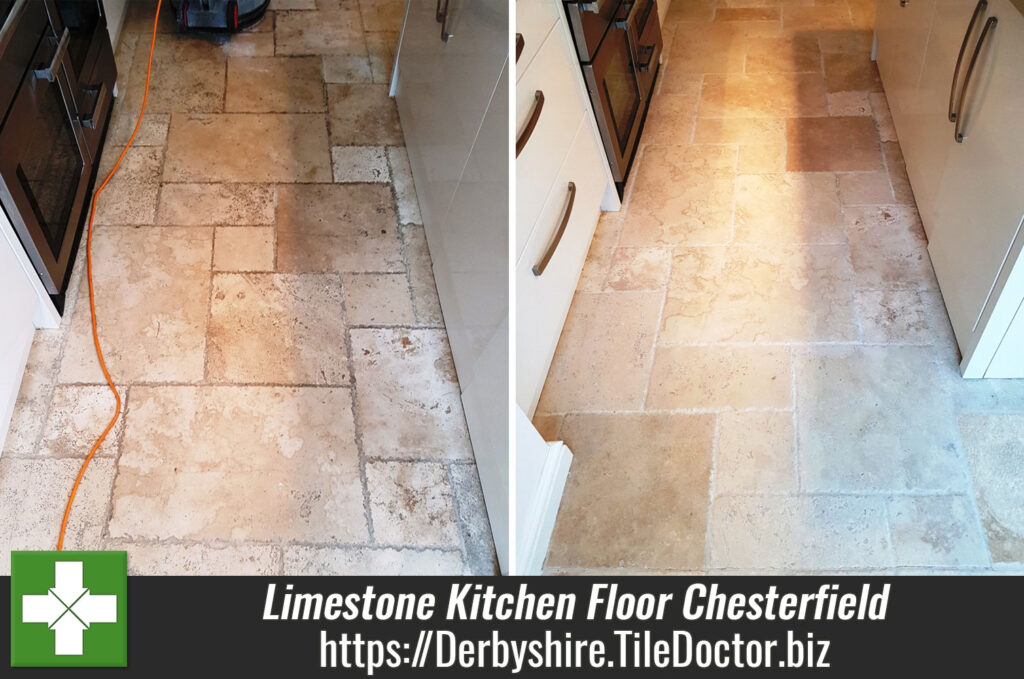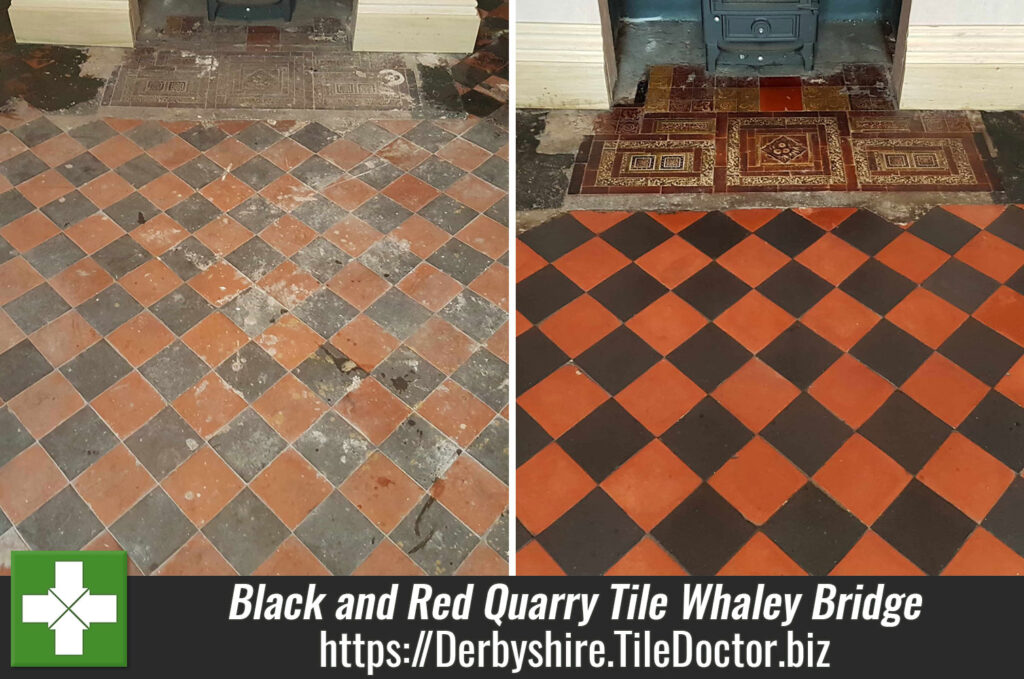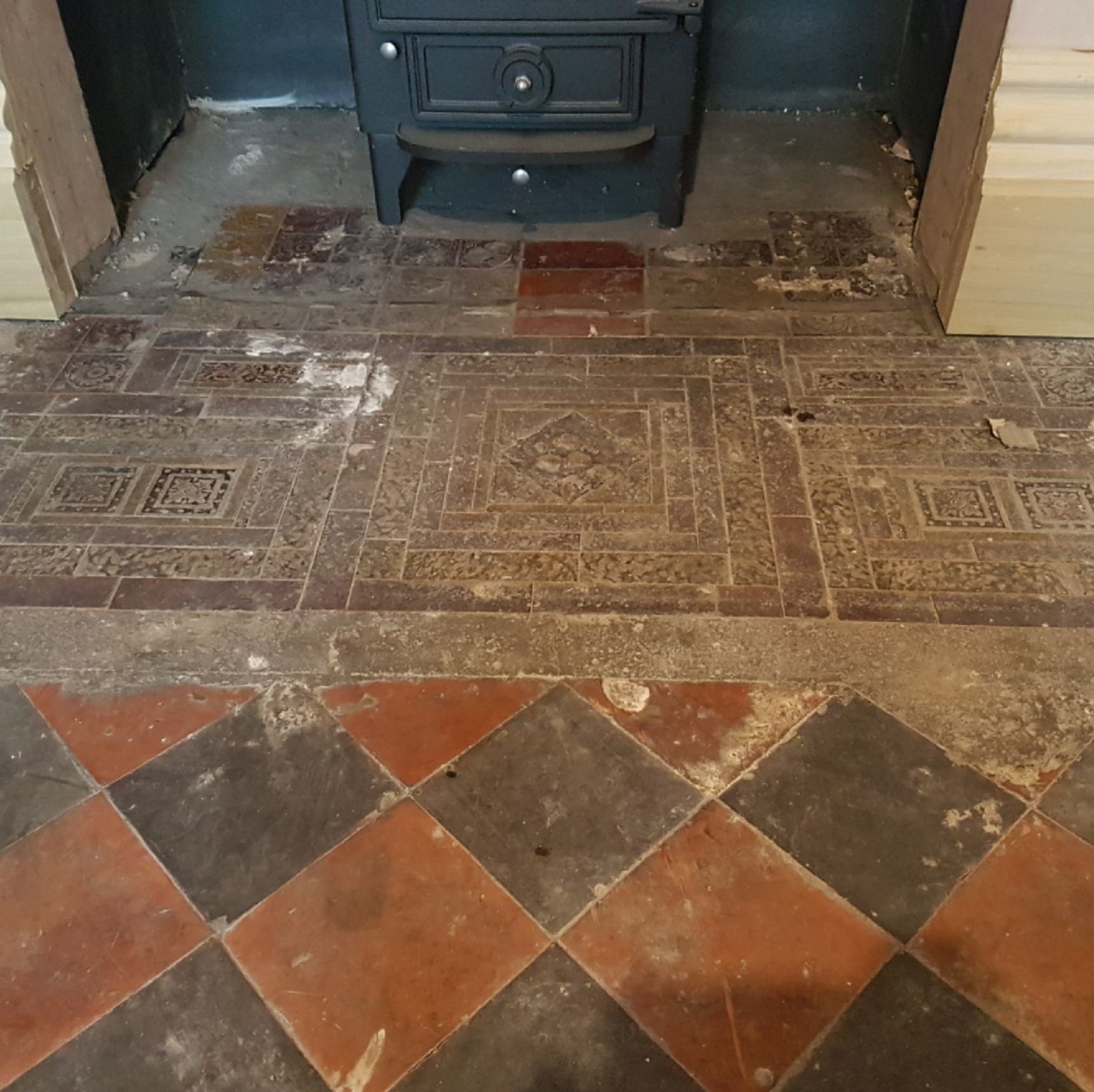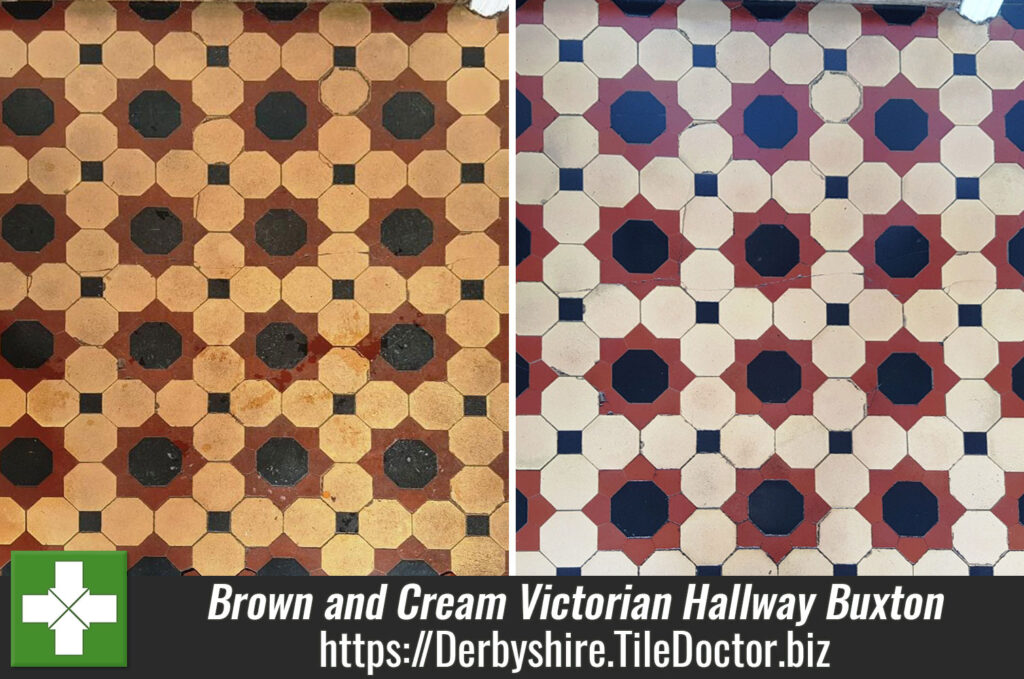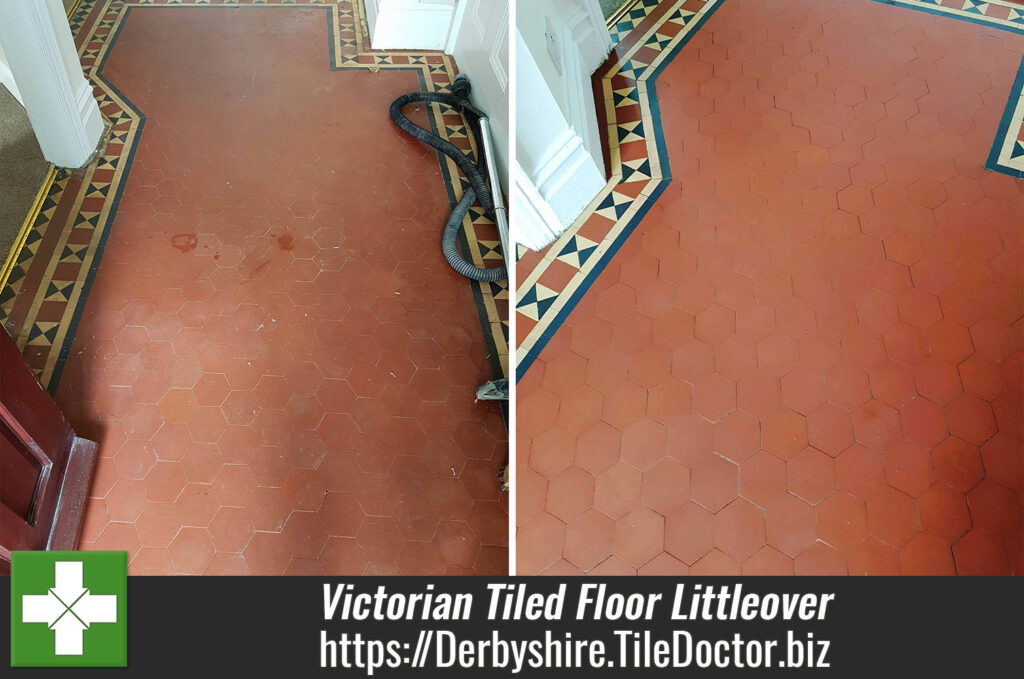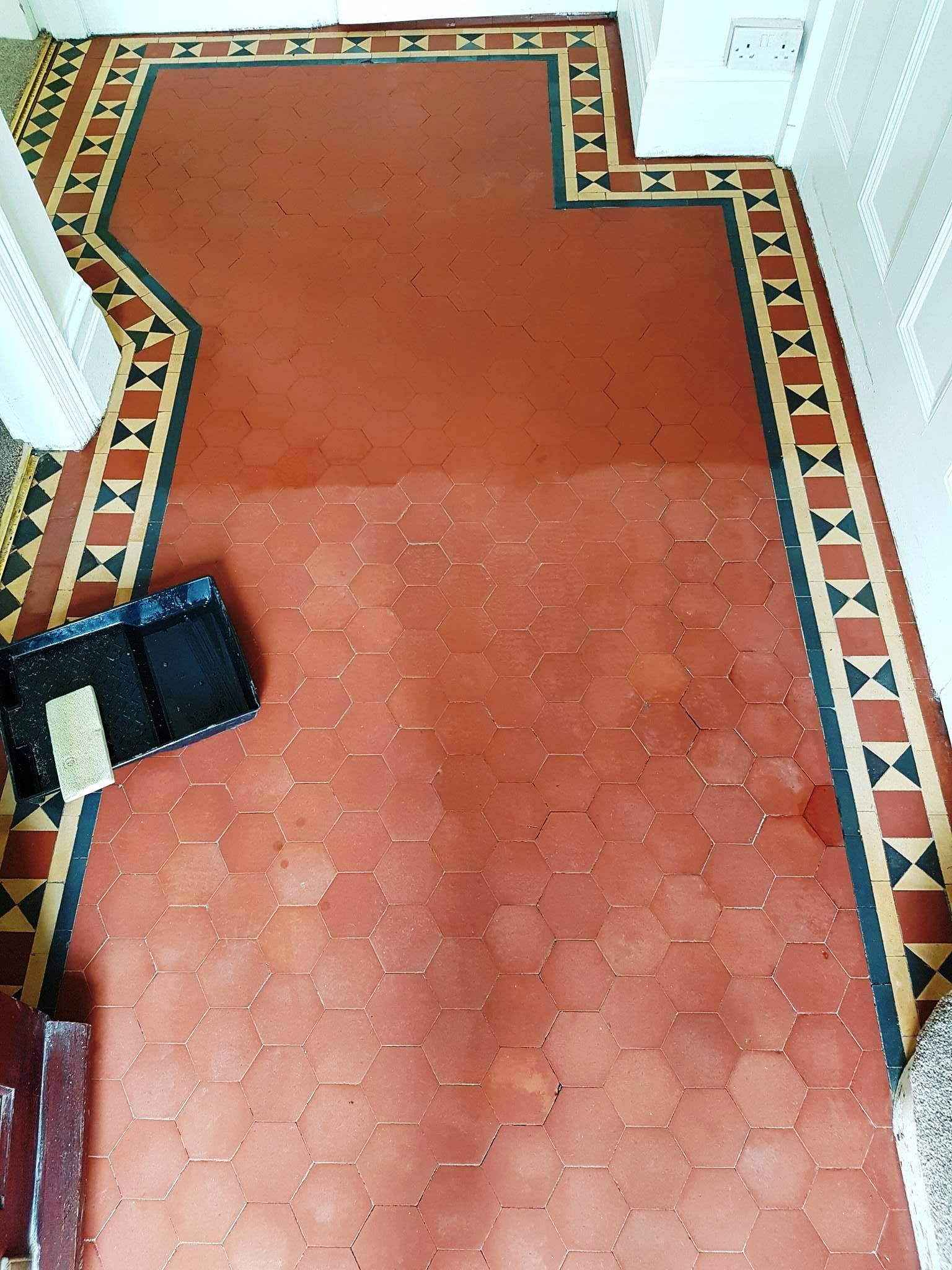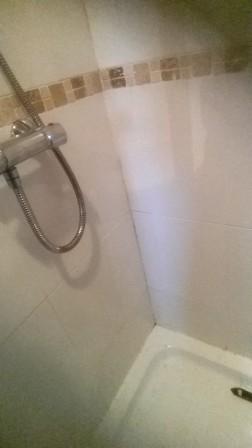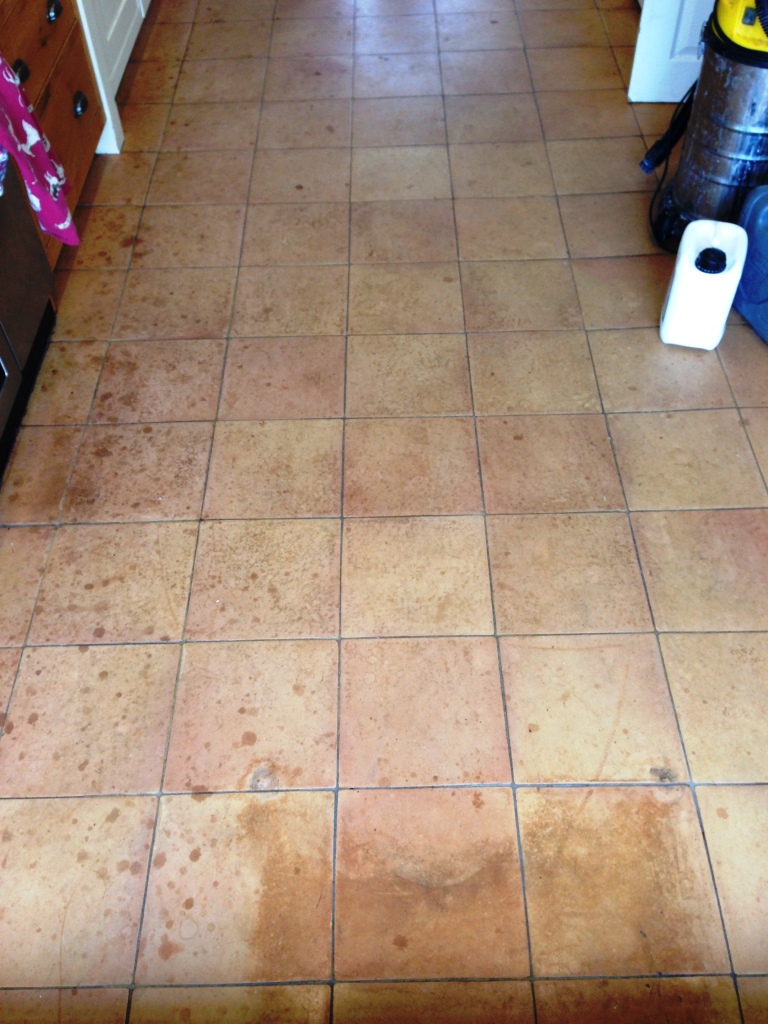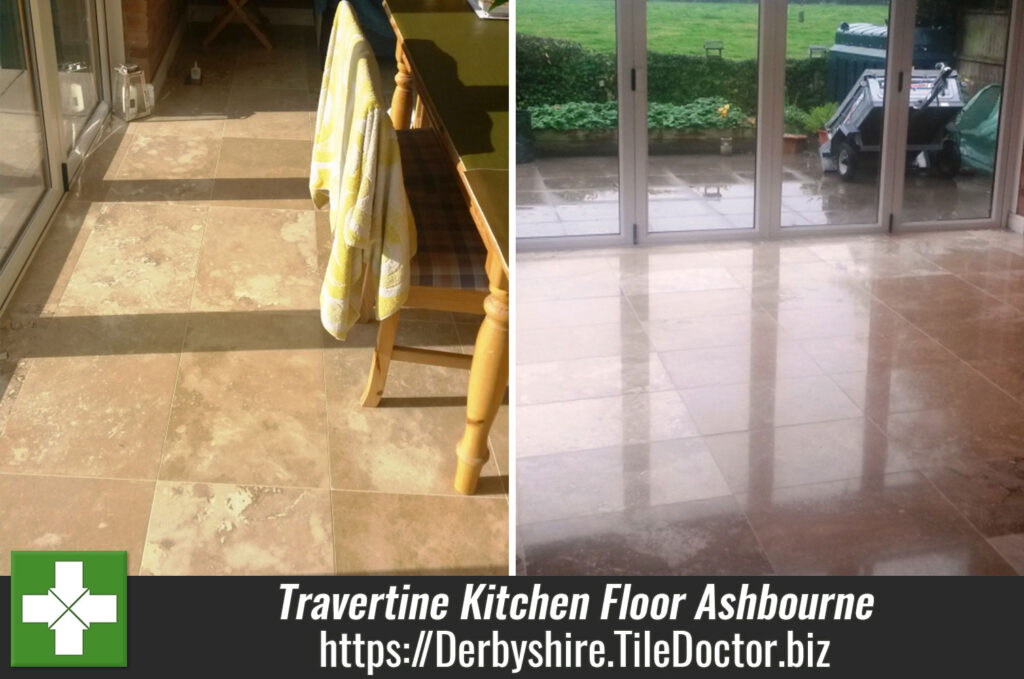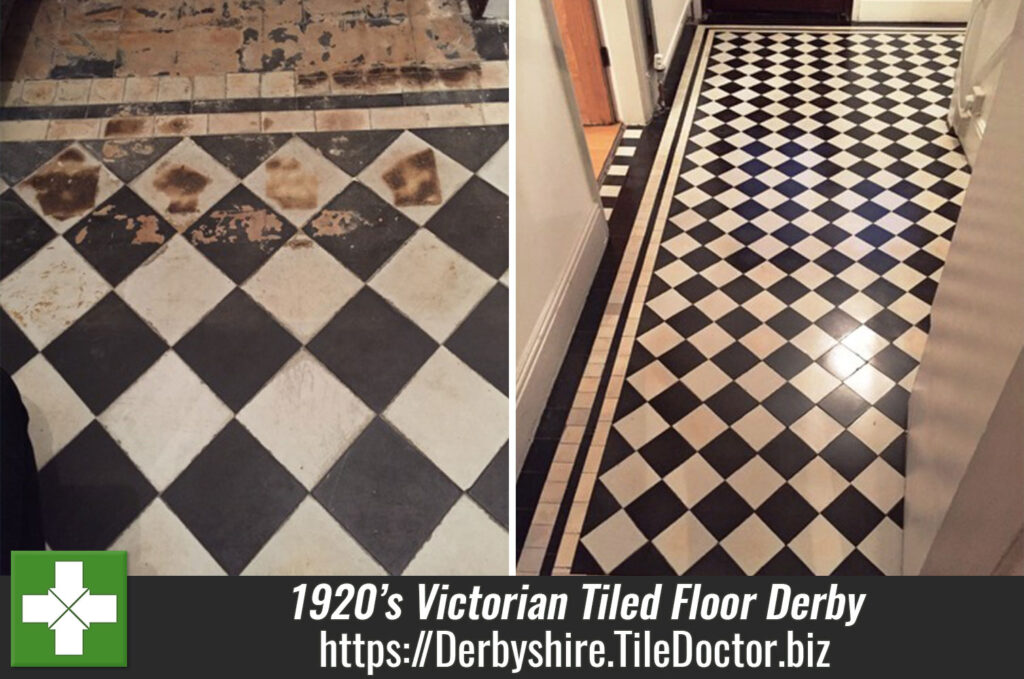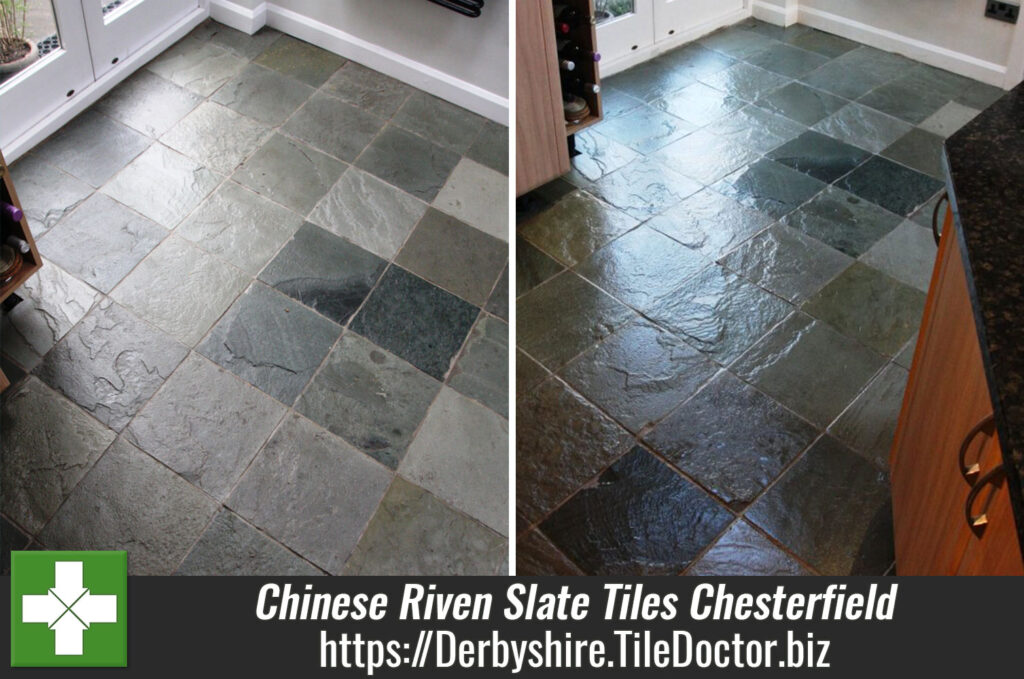Bathroom Floor Grout Coloured with Ivory Grout Colourant in Matlock
I received a call from a lady who lives in the beautiful spa town of Matlock in Derbyshire Peak District with a Porcelain tiled shower room floor. She had been recommended to myself from a good friend whose kitchen floor grout I had recoloured the week before.
She had a similar problem to her friend whose bathroom floor was being let down by the grout which had completely discoloured and no longer matched the wall tiles. This tends to happen as the dirt from the tile is washed into the grout lines during cleaning with a mop.
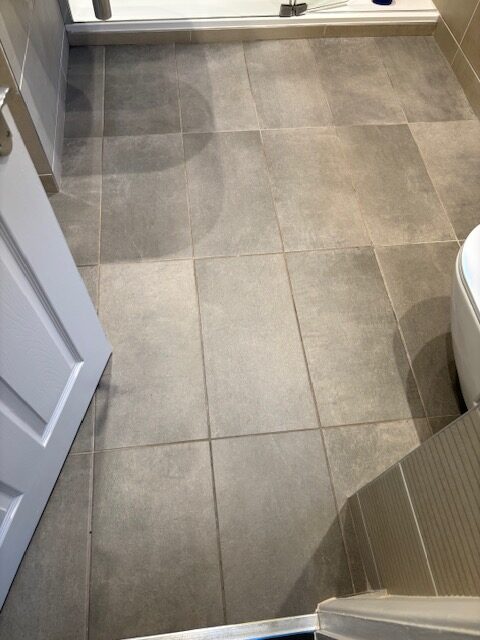
Having visited the property to survey the floor I advised her that although I could clean the grout it would most likely go dark again and that there may be deep seated stains that I simply can’t remove.
As a result, I recommended renovating the grout using a Tile Doctor Grout Colourant which is available in 11 different colours. I always carry a few colours with me so I applied a couple of different ones to the grout so she could see which one would work best with the tiles. Ivory seemed to work well so I worked out a quote to renovate the grout using an Ivory Grout colourant which she was more than happy with and so I booked her in.
Renovating Discoloured Grout in a Tiled Bathroom Floor
I turned up on the agreed date and I started work by spraying all the grout lines with a Tile Doctor Grout Pre-Treater. This product cleans and etches the surface of the grout to provide a better bond with the grout colourant which comes next.
The Pre-Treater was then scrubbed into the grout lines with a hand brush to agitate the solution and lift the dirt and other contaminants. After five to ten minutes, I wiped the spray away and the now grubby solution and rinsed with water and then wiped again to remove any pre-treater left behind.
Once dry I began to apply the Tile Doctor Grout Colourant to all the joints using a small brush in a painting motion, wiping away any excess left behind on the tiles as I went. The job is quite a slow one due to the small grout lines but quite satisfying as the difference is immediate.
The Grout Colourant not only rejuvenates the grout but also seals it in thereby protecting from future staining and making the grout so much easier to clean. After 2 coats and a final wipe of the tiles the renovation was complete.
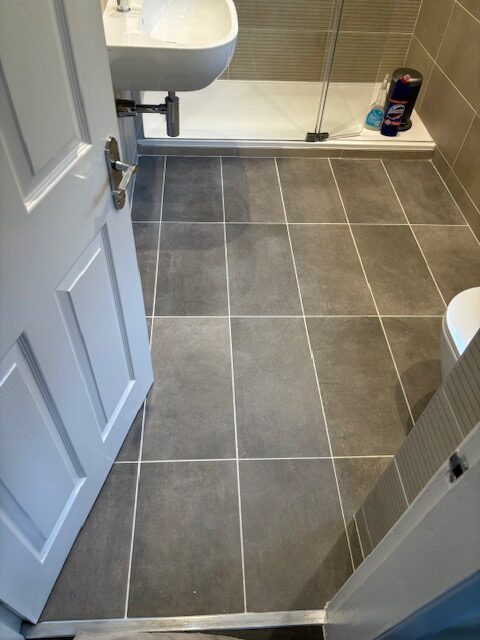
The client was delighted and the floor looked amazing.
It was not necessary this time to replace the silicone sealant around the shower, but it’s worth knowing this is a service we offer. Often this becomes mouldy over time and brings down the overall look of the bathroom.
Professional Restoration of a Tiled Bathroom Floor in Derbyshire
Bathroom Floor Grout Coloured with Ivory Grout Colourant in Matlock Read More »

